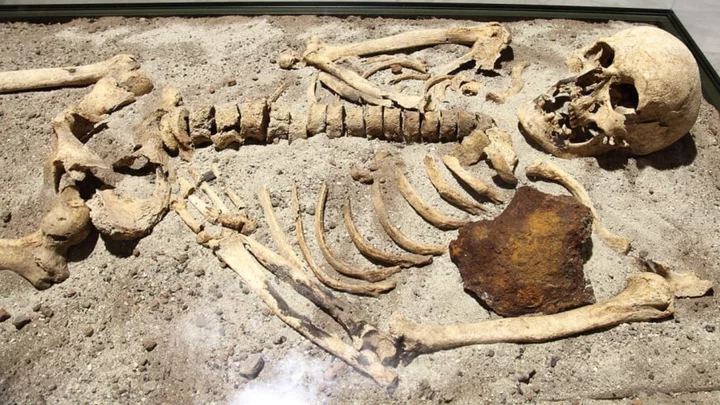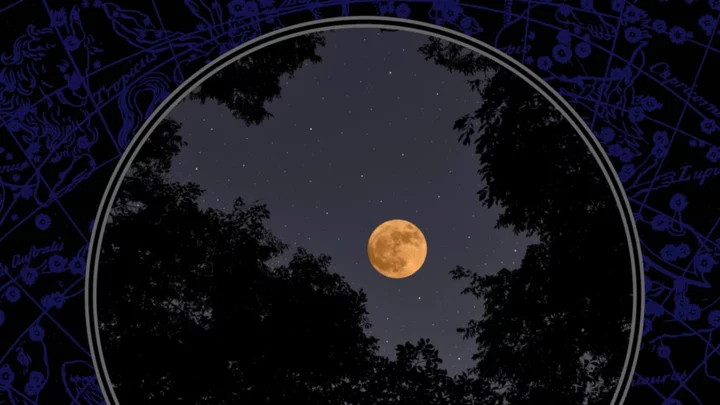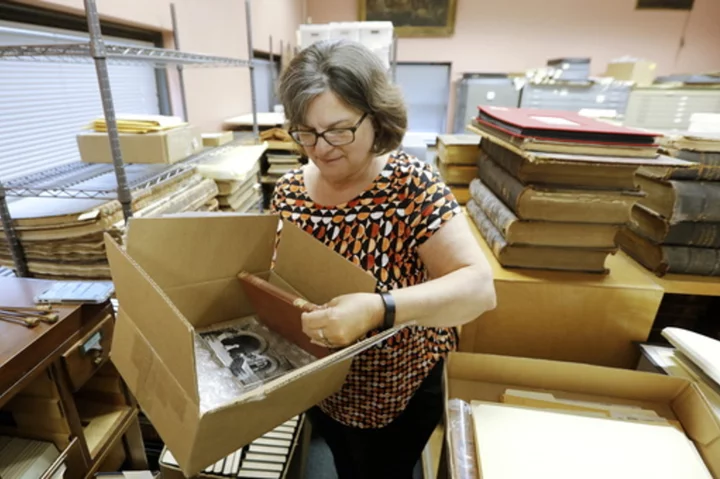Vampires, witches, zombies, and revenants have all been put forward as explanations for strange burials throughout history, as people tried their best to keep the dead from rising again. But not all of the visually arresting scythes, chains, nails, and other macabre paraphernalia in these graves are as grisly as they seem.
1. Iron Stakes
A stake to the heart is a seen as a classic method of dispatching a vampire, from Bram Stoker’s Dracula to Buffy the Vampire Slayer. This practice appears to be based on historical evidence, with at least three burials in Bulgaria found with iron poles driven into them. Two were found at the Black Sea town of Sozopol in a cemetery dated to the Middle Ages, while another staked medieval skeleton was discovered in southern Bulgaria. According to experts, the stakes kept the dead in their graves, and this practice lasted until well into modern times in Bulgaria as a way of ensuring the dead stayed that way.
2. Stones in the Mouth
Skeletons across Europe are occasionally found with rocks or bricks in their mouths. In England, archaeologists discovered a Roman-era burial of a man whose tongue was excised and a stone wedged in his mouth before he was buried face down. While his tongue might have been removed for fear of contagion, the burial overkill could reflect a fear of the dead man rising from his grave. In Italy, a 5th-century child and a 16th-century woman were buried with mouth-stones as a way to prevent the dead from plaguing the living. And a 16th-century Polish grave was found to contain a person whose teeth were extracted and a rock placed in the mouth, possibly to counter the belief that, as they rise from the dead, “vampires” eat their own burial shrouds to gain strength and cause trouble for the living. A stake through one of the skeleton’s legs similarly confirmed the living’s fears of otherworldly retribution.
3. Nails
While nails are typical coffin hardware that archaeologists regularly find in their excavations, sometimes these fasteners hold a metaphorical meaning. A 2000-year-old grave in Türkiye had three unique methods of preventing the restless dead: cremation, followed by a scattering of nails, topped with bricks and plaster. Although the dead man had been carefully buried, the bent nails—also found in European cemeteries in this time period—likely reveal that the living were fearful of his return. And the grave of a woman from the Middle Ages was found in Italy with seven nails in her jaw and another dozen scattered around her. Since archaeologists found no coffin hardware, they think she may have been literally nailed to the earth to prevent her from coming back from the dead, a treatment reserved for suspected witches.
4. Scythes
Well known for being a symbol of the Grim Reaper, scythes have been found around the necks of half a dozen skeletons in a 400-year-old cemetery in Drawsko, Poland. Initially interpreted as a tool to prevent the dead from rising up, the sharp item may actually have protected the dead themselves from evil forces or acted as a symbol marking people who died tragically. A similar scythe burial was discovered over 300 miles away in Pień, Poland. In this case, though, the 17th-century woman also sported a padlock on her left big toe, lending support to the idea that scythe burials were dedicated to preventing revenants from walking the Earth once again. Researchers also suggest that the cemetery was reserved for those who were unwelcome in Christian cemeteries.
5. Mutilation and Decapitation
Mutilation, including decapitation, is often thought of as the worst form of desecration of the dead owing to the Judeo-Christian tradition of keeping a body whole for burial, so examples of this practice in Europe can be interpreted as ways to keep the dead from resurrecting. Bog bodies—naturally mummified remains of people found in peat bogs in northern Europe—are often found to have been tortured prior to death. The man known as the Moor Corpse of Daetgen, for example, was beheaded, stabbed, and had his penis cut off, likely to prevent him from taking revenge on the living. And headless corpses are found in large numbers from Slovakia to Poland to England.Researchers have suggested that removal of body parts after death may be related to something as benign as changing funeral practices rather than anti-vampire rituals.
6. Chains and Locks
In the same Pień burial ground as the woman with a scythe was a young child, buried face down with a triangular metal padlock. The odd burial method could mean the child died suddenly or from a tragic event such as drowning, or perhaps was unbaptized, explaining the kid’s inclusion in the makeshift graveyard. Other recently found burials of people in chains, such as those from Roman-era France and ancient Greece, however, likely reflect the dead’s enslaved status rather than any sort of spiritual anxiety among the living.
7. Prone Burials
A teenage girl who died in Cambridgeshire, England, in the 9th century was found face down and probably had her feet bound together, which archaeologists have suggested implies she was buried in a way that prevented her from coming back to life. And the face-down burial of a “witch girl” from the Middle Ages discovered in Italy has been interpreted as an act of punishment that prevented the teen’s evil soul from menacing the living.
Prone burials, however, are not uncommon in cemeteries in Western Europe. Research into hundreds of examples of the practice during the Middle Ages has shown that prone burials may have been made when a person died from infectious disease, such as plague, but also could relate to periods of cultural or historical crisis, or even to the introduction of different ideas about burial. Since one ancient theory about vampires was that they could bite their way out of graves, though, prone burial has often been seen as a method to anchor the dead in their final resting places.
8. Iron Cages
Changing burial practices are also the most likely reason for a grave treatment that many of us have seen before: iron cages. While these structures may appear at first glance to be a kind of prison cell for the dead, meant to prevent them from walking the earth, their other name—mortsafes—reveals that they actually protected the dead from the living. In the 19th century, before human bodies could be legally donated and dissected, “resurrection men” trawled graveyards looking for fresh corpses to dig up and sell to medical practitioners. If you wanted to avoid becoming the star of the operating theater, a mortsafe might be just the thing to protect your body.
Humans have long had a fascination with and a fear of death, but we deal with it in many ways that differ based on culture, religion, and the burial fashion of the time. Disposal of the dead can take many forms, but in most cases, it is a way to honor ancestors and keep the living safe from supernatural harm.
This article was originally published on www.mentalfloss.com as 8 Historical Methods for Keeping the Dead in their Graves.









